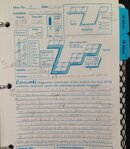Hey guys. Long time no post. I thought some of you might be interested in the events that followed my messy first attempt.
After an incredibly busy couple months, I was finally able to take TSandM up on her offer for a dive.
The first attempt managed to get screwed again by my inflator (servicing wasn't enough apparently, so we replaced it), but we still managed to do a weight check and get things moving in the right direction.
However, this morning's attempt finally gave me a successful introduction to Puget Sound diving! 28 minutes in Alki Cove 2. A bit chilly (and wobbly) but an overall victory! Saw some squid eggs and a gorgeous little Oligocottus down there too!
Of course, I need to give a HUGE thanks to TSandM for all of the helpI think I got almost as much from picking your brain on the surface as I did diving with you!
So in summary: I'm still a total n00b, but I'm a n00b happily moving in the right direction. My way forward is simple: dive dive dive!
It looks like I have about 10 weeks to practice in the Sound, and I want to be underwater every moment I can. The goal is to dive at least once a week, more if I can pull it off.
Seattle-area divers with cars and the patience to deal with me... Hit me up?

if it's humanly possible for me to squeeze a dive in, I'll work with you.





